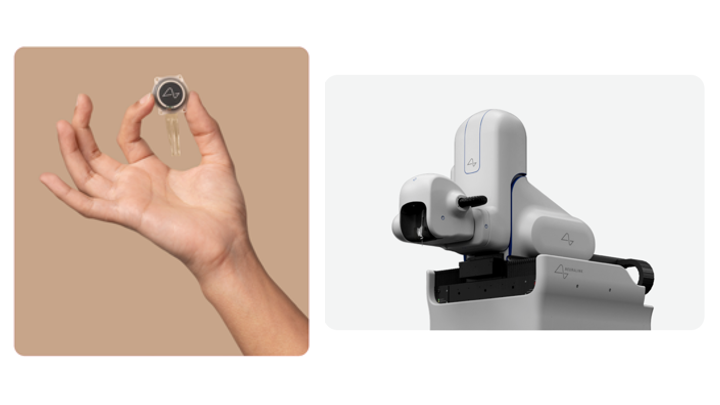Key Points:
- Elon Musk recently announced the first implantation of a Neuralink device into a human.
- Like the other brain-computer interface devices (BCIs) before it, the Neuralink device may stop working over time.
- With more FDA-approved BCIs in the game, we may see this problem in the field solved sooner than later.
In saying, “The first human received an implant from Neuralink yesterday and is recovering well,” on his platform X, Neuralink founder Elon Musk prompted dozens of mirroring headlines. Rarely does it seem such few words leave scientists, skeptics, and onlookers in awe of what’s to come. Some even predict, half jesting, that those connected to the device will be susceptible to being Rickrolled, which could be made possible if Neuralink is hacked. However, hacking may be difficult, as there is no evidence that Musk’s device connects to the internet, yet.

In the second half of his X post, Musk adds, “Initial results show promising neuron spike detection.” Neuron spikes are readouts of the brain’s electrical activity. As a brain-computer interface (BCI), Musk’s Neuralink is designed to bypass the need for movement, reading the brain’s electrical activity to make changes to the external world. So far, BCI’s have been used to control cursors on computer screens, write text messages, operate wheelchairs, and manipulate robotic arms.
The hope is that BCI technology will aid individuals who can’t move their limbs, such as spinal cord injury and amyotrophic lateral sclerosis (ALS) patients. And for individuals who have lost their limbs completely, BCI’s may permit the control of robotic replacements. BCI’s also show promise in restoring electrical activity within the brain, treating symptoms of schizophrenia, including emotional disturbances and cognitive dysfunction.

Musk’s brand of BCI will be called Telepathy, which he says will be Neuralink’s first product. In another X post, Elon said Telepathy “enables control of your phone or computer, and through them almost any device, just by thinking.” He says “initial users will be those who have lost the use of their limbs,” adding, “imagine if Stephen Hawking could communicate faster than a speed typist or auctioneer. That is the goal.”
What Do Scientists Think of Neuralink?
Neuroscientist and president of the international BCI Society Mariska Vansteensel wonders if Neuralink will face the same issues as most BCI devices. In speaking with the journal Nature, Dr. Vansteensel said,
“You’re not going to replace electrodes easily after implantation. If, in a month from now, they demonstrate beautiful decoding results — impressive. But I will want to see long-term results.”
Dr. Vansteensel is speaking of a major obstacle with BCIs — their degradation in performance over time. Using electrodes thinner than a human hair, Neuralink’s BCI must accurately decode the brain’s electrical activity to predict the user’s movement intent. However, over time, these predictions may become inaccurate due to factors like micromotions between electrode tips and brain tissue, and natural spatial changes in neural activity.

Neuralink’s BCI is also one of the only wireless systems, making it all that more experimental. When it comes to experiments, Neuralink is now recruiting individuals for their first clinical trial, called the PRIME study. With the intent of enabling individuals with paralysis to control external devices, the study will evaluate the safety and effectiveness of the:
- N1 Implant: Neuralink’s first experimental BCI implant
- R1 Robot: the first robot used to surgically implant the N1 device
- N1 User App: the software interface used to control a computer with the N1 implant
Considering that the study will last about 6 years and participants will be followed over 5 years, Neuralink researchers should know whether the N1 implants’ performance degrades over time just a few years into the study.
However, there is a lack of transparency concerning the PRIME study, which is not listed on ClinicalTrials.gov. Universities usually require researchers to register new trials, protocol and all, on ClinicalTrials.gov before participants are enrolled. This has left some scientists wondering how the PRIME study will be carried out. Neuroengineer Tim Denison at the University of Oxford says,
“My assumption would be that the FDA and Neuralink are following the playbook to a certain extent. But we don’t have the protocol. So we don’t know that.”
Researchers like Denison can only hope that the implantation of the Neuralink device will be safe, saying, “no strokes, no bleeds, no vasculature damage, anything, like that.” Additionally, there is the risk of infection.
While the exact protocol has not been published, according to Musk, the 64 threads that house the 1,024 electrodes of the Neuralink device are too thin to be handled by human hands, requiring a robot’s touch. Surgeons will first remove the top of the skull, allowing the robot to insert electrodes into the brain while avoiding blood vessels. The electrodes will be connected to the main device behind the ear, and none of the implant will be visible to outside observers.

Far From Our Consciousness Being Uploaded into The Cloud
Unless Elon and his team of scientists and engineers have some tricks up their sleeve, such as innovative recalibration software, we may see that the N1 implant fails to capture its user’s intentions just a few years post-surgery. Before this problem is solved for BCIs, the Neuralink device really should not be connected to the internet. With this in mind, transhumanists will have to wait a bit longer before they can upload a copy of their mind into a computer.
On the bright side, Neuralink joins the ranks of other companies with FDA-approved BCIs, such as Synchron — a company that uses a less invasive approach, implanting their device through an artery in the brain. With more BCI players in the game, we are more likely to see breakthroughs in the field sooner. Dr. Denison says,
“We need to all play the long game for the good of patients.”